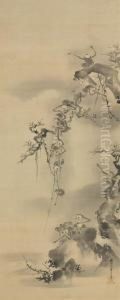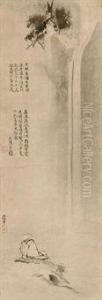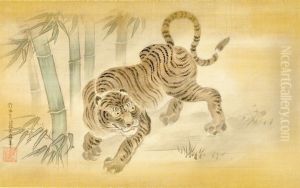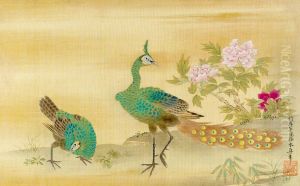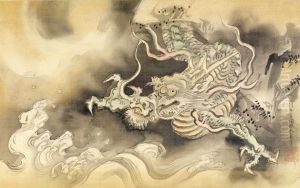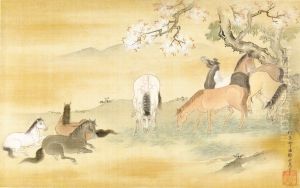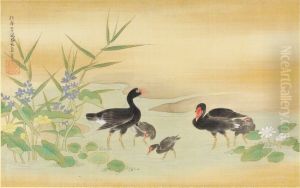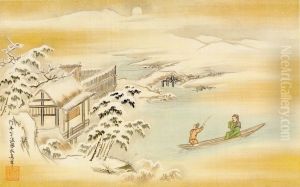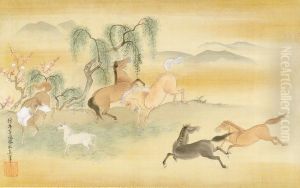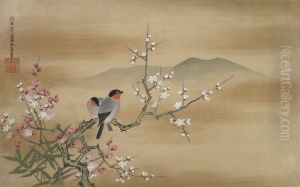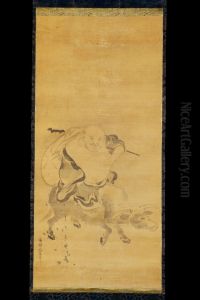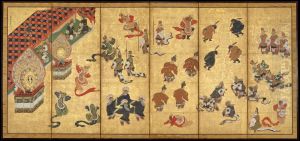Kano Yasunobu Paintings
Kano Yasunobu was a prominent Japanese painter of the Kano school during the early Edo period. Born in 1613 in Kyoto, Japan, Yasunobu was a member of the illustrious Kano family, which had been the dominant school of painting for several centuries in Japan, closely associated with the powerful ruling classes and the shogunate.
Yasunobu was the younger brother of Kano Tanyu, who was one of the most influential figures in the Kano school and played a significant role in the development of its style. Yasunobu received his artistic training under the guidance of Tanyu and was heavily influenced by his brother’s techniques and the traditions of the school. The Kano school was renowned for its blend of Chinese-inspired ink wash painting with Japanese decorative elements and was often characterized by the use of bold brushwork and a strong emphasis on nature themes.
Throughout his career, Yasunobu worked on a large number of commissions for the shogun and other high-ranking officials. He became known for his ability to adapt and merge different styles, combining the grandiose and powerful Momoyama style with the more delicate and detailed approaches of the Edo period. Yasunobu’s work often included large-scale screen paintings, sliding door panels (fusuma), and hanging scrolls. His subject matter was diverse, ranging from landscapes and flowers to scenes from Japanese literature and history.
Following the tradition of the Kano school, Yasunobu not only worked as a painter but also took on roles as an educator and custodian of the school's traditions. He played a significant part in ensuring the continuity of the Kano school’s style and its dominance in Japanese art during a period of cultural and political change.
Kano Yasunobu passed away in 1685, leaving behind a body of work that continued to influence Japanese painting. His contributions to the Kano school were significant in maintaining its prestige and adapting its practices to the changing tastes of the Edo period. Yasunobu’s works are preserved in several museums and collections in Japan and around the world, where they are celebrated for their historical and artistic value.
